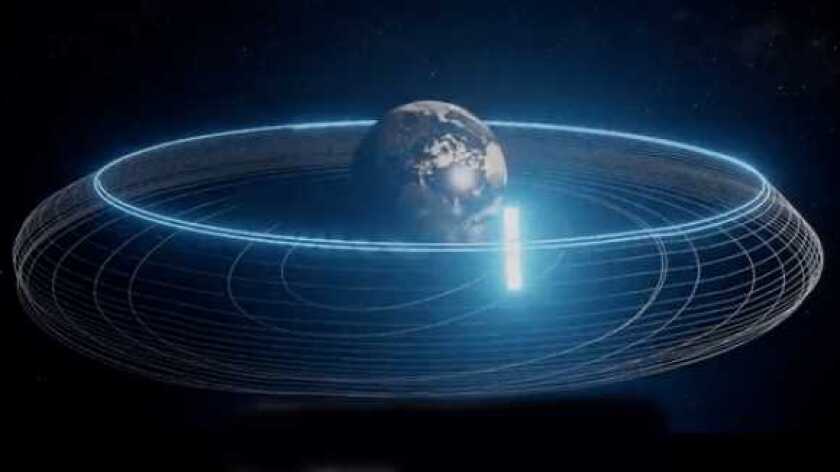The reason for the slow delivery is that Inmarsat has been using all-electric propulsion to take the I-6 F1 satellite (pictured) from its initial orbit up to the GEO 36,000km above the Earth.
I6-F1, built by Airbus Defence and Space and launched by Mitsubishi Heavy Industries, is the first of seven giant satellites that Inmarsat is planning. Its solar arrays are as wide as the wingspan of a Boeing 767.
It will be early 2023 before I-6 F1 goes into service as part of Inmarsat’s Elera network, delivering L-band (1.5-2.7GHz) and Ka-band (27-40GHz) payloads over the eastern Indian Ocean. At the moment it is over the Atlantic, where it is being tested.
Inmarsat CTO Peter Hadinger said: “The I-6 satellites will extend Inmarsat’s global leadership in L-band services through Elera to the 2040s, as well as enhance further our Global Xpress Ka-band network capacity in emerging hotspots.”
UK-based Inmarsat, which is subject to an agreed merger deal with California-based Viasat, said I-6 will play “an integral role in the exceptionally reliable GEO infrastructure” that “will combine GEO, highly elliptical orbit (HEO), low Earth orbit (LEO) and terrestrial 5G into one harmonious solution”.
Inmarsat calls this project, with 150-175 satellites, Orchestra. Last December it tried out the LEO payload, though it was careful not to reveal much, saying “details of the in-orbit testing remain confidential”.
The second satellite in the fleet, I-6 F2, has just completed testing at Airbus Defence and Space facilities in Toulouse. It is due to be launched in the first quarter of 2023 by SpaceX.
Hadinger said: “Offering greater bandwidth and coverage, supporting greater speeds and a greater portfolio of innovative connectivity, Inmarsat’s I-6s also substantially increase the effective capacity of the Elera network available to our customers.”






